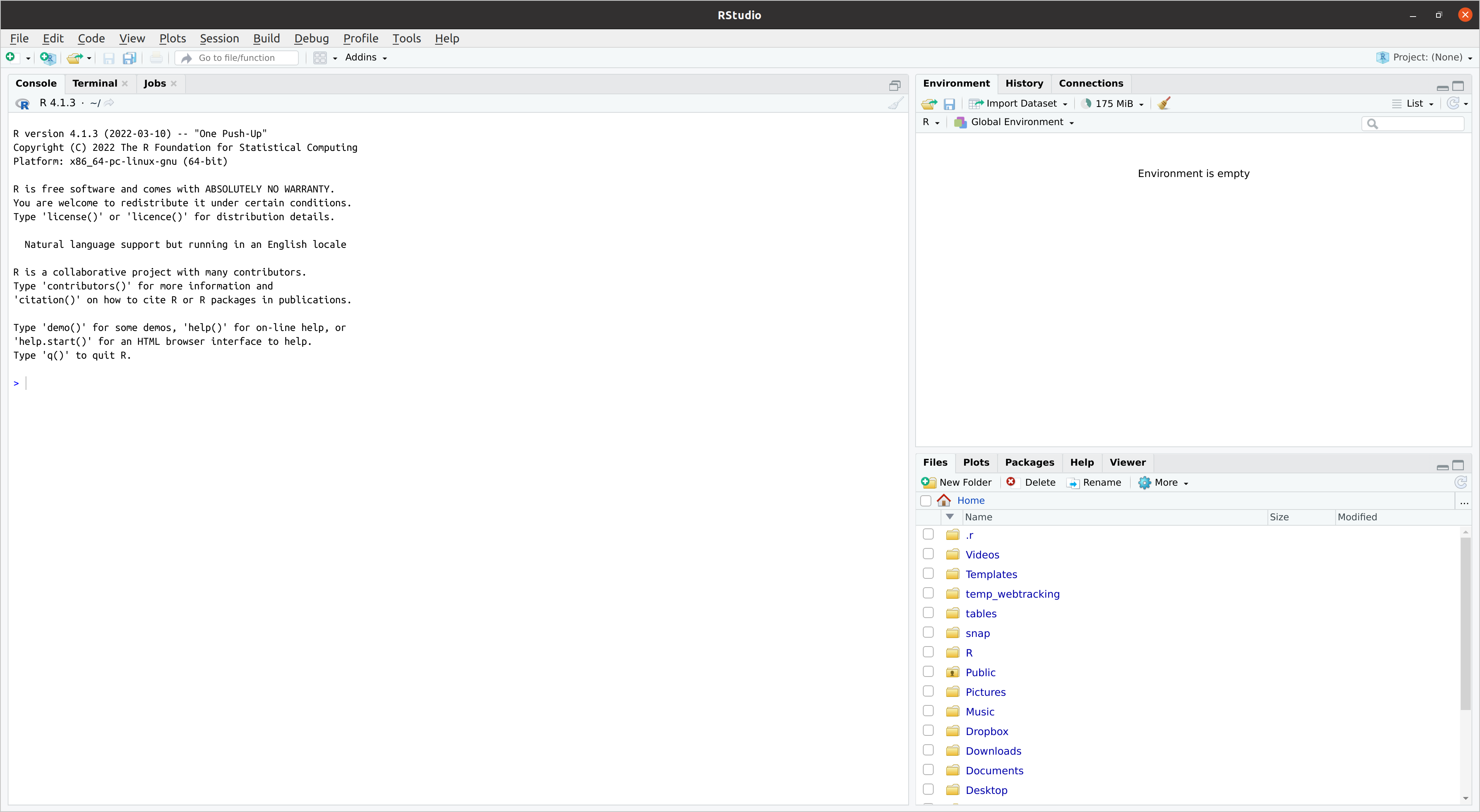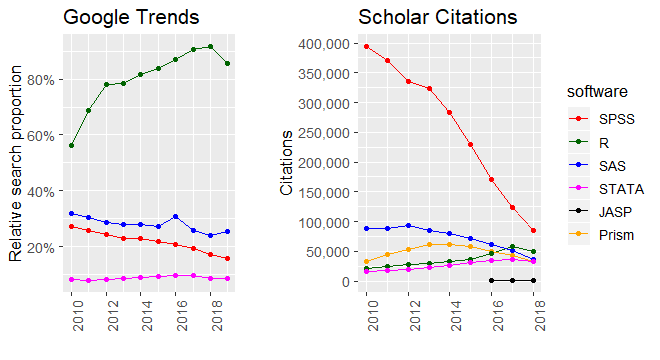Overview¶
- Backstory
- RStudio
- R Script
- Markdown/R Markdown
- Operators
R background¶
 |
 |
Source: University of Auckland, R Project
- S (for statistics) is a programming language for statistical analysis developed in 1976 in AT&T Bell Labs
- Original S language and its extention S-PLUS were closed source
- In 1991 Ross Ihaka and Robert Gentleman began developing R, an open-source alternative to S
R release names (v. 4.1.1 -- "Kick Things")¶

Source: Twitter
Extra: More on historical R release names
R and development environments¶
- There is some choice of integrated development environments (IDEs) for R (StatET, ESS, R Commander)
- However, over the last decade RStudio became the de factor standard IDE for working in R
- You can also find R extensions for your favourite text editor (Atom, Sublime Text, Visual Studio Code, Vim)
RStudio¶

R Script¶
- Usually you want to have a record of what analysis was done and how you did it.
- So, instead of writing all your R commands in the interactive console,
- You can create an R script, write them there and run then together or one at a time.
- R script is a file with
.Rextension and contains a collection of valid R commands.
R Markdown¶
- Markdown:
- Easy-to-read and easy-to-write plain text format;
- Separates content from its appearance (rendition);
- Widely used across industry sectors and academic fields;
.mdfile extension.
- RMarkdown:
- Allows combining of R commands with regular text;
- Compiles into PDF/DOC/HTML and other formats;
- Can be converted into slide deck or even website!
.Rmdfile extension
Markdown formatting basics¶
- Use
_or*for emphasis (single - italic, double - bold, triple - bold and italic)*one*becomes one,__two__- two and***three***- three
- Headers or decreasing levels follow
#,##,###,####and so on - (Unordered) Lists follow marker
-,+or*- Start at the left-most position for top-level
- Indent four space and use another marker for nesting like here
- (Numbered) Lists use
1.(counter is auto-incremented) - Links have syntax of
[some text here](url_here) - Images similarly:

R Markdown example¶
Some text in *italic* and **bold**
Simple list:
- A
- B
Ordered list:
1. A
1. B
Example, where $Y = X + 5$
```{r}
x <- 3
y <- x + 5
y
```R Markdown example¶
Some text in italic and bold
Simple list:
- A
- B
Ordered list:
- A
- B
Example, where $Y = X + 5$
{r}
x <- 3
y <- x + 5
yR basics¶
- R is an interpreted language (like Python and Stata)
- It is geared towards statistical analysis
- R is often used for interactive data analysis (one command at a time)
- But it also permits to execute entire scripts in batch mode
In [2]:
print("Hello World!")
[1] "Hello World!"
Operators¶
Key operators (infix functions) in R are:
- Arithmetic (
+,-,*,^,/,%/%,%%,%*%) - Boolean (
&,&&,|,||,!) - Relational (
==,!=,>,>=,<,<=) - Assignment (
<-,<<-,=) - Membership (
%in%)
Basic mathematical operations in R¶
In [3]:
1 + 1
[1] 2
In [4]:
5 - 3
[1] 2
In [5]:
6 / 2
[1] 3
In [6]:
4 * 4
[1] 16
In [7]:
## Exponentiation, note that 2 ** 4 also works, but is not recommended
2 ^ 4
[1] 16
Advanced mathematical operations in R¶
In [8]:
# Integer division
7 %/% 3
[1] 2
In [9]:
# Modulo operation (remainder of division)
7 %% 3
[1] 1
Basic logical operations in R¶
In [10]:
3 != 1 # Not equal
[1] TRUE
In [11]:
3 > 3 # Greater than
[1] FALSE
In [12]:
FALSE | TRUE # True if either first or second operand is True, False otherwise
[1] TRUE
In [13]:
F | T # R also treats F and T as Boolean, but it is not recommended due to poor legibility
[1] TRUE
In [14]:
3 > 3 | 3 >= 3 # Combining 3 Boolean expressions
[1] TRUE
Next¶
- Introduction to computation
